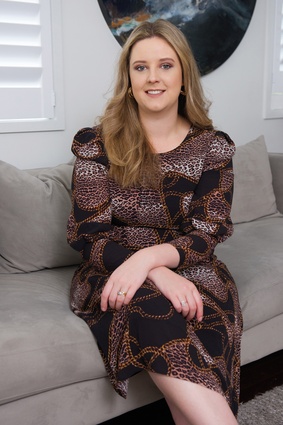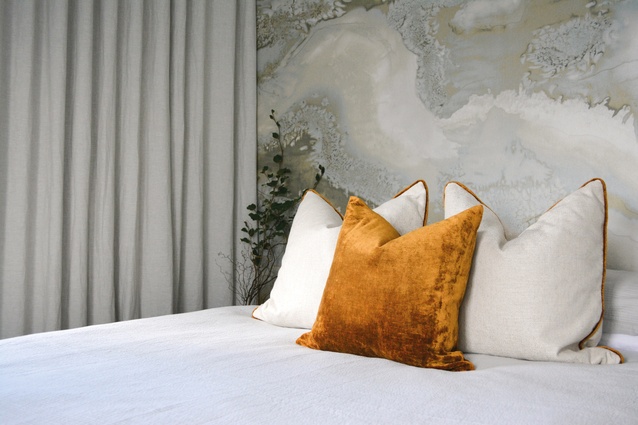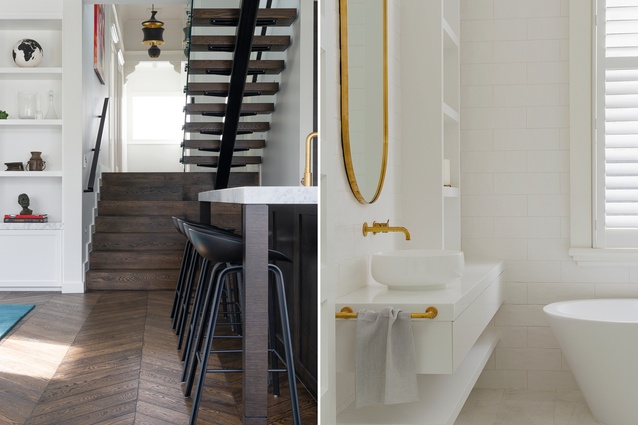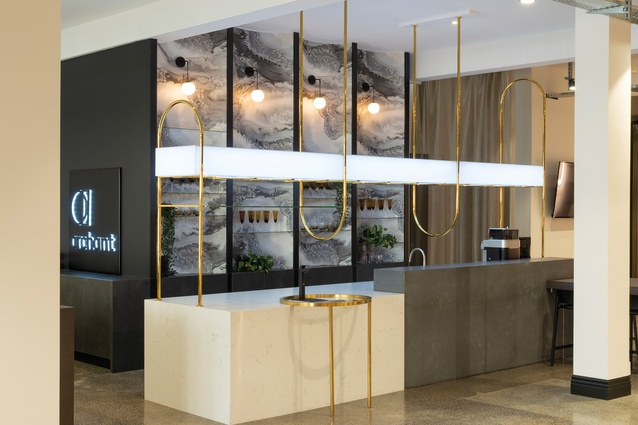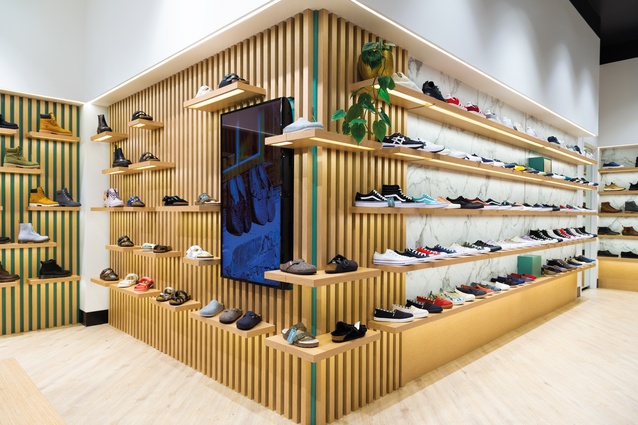Designer interview: Kristen Basra
Kristen Basra’s budding career belies the strength of her expertise and the quiet tenacity that has seen the spatial designer found her own firm, Spatial Studio. We sit down with her in the wake of her success at the 2019 Interior Awards, where she took home the coveted title of Emerging Design Professional.
Interior: What were some of the key things you learned during the period after university in which you did purely contract work?
Kristen Basra (KB): If you don’t have any experience, you may not have a chance at an interview for a position, even a junior design position. I learned efficiency (everyone loves a fast turnaround and quality of work – if you can make someone’s life easier, you will forever be remembered), a can-do attitude (positive responses to a request leave generally positive outcomes) and to ask questions (asking questions doesn’t hurt – you’ll grow faster as an individual if you have the courage to ask and you don’t need to know everything).
Interior: What were some of the challenges of starting your own studio?
KB: The first challenge along the way was getting clients. They came slowly from builders and architects, then from client referrals later on. The second was creating trust with a client when I didn’t have a portfolio to show. I’m still building my portfolio but I feel I have enough to show my style.
My initial vision of what a designer has was a beautiful studio space, a team of people and libraries of samples; but, there was no way I could fund this set-up, so I worked out of my husband’s small office in East Tāmaki, with a desk, a chair and a laptop.
All of this, in the end, didn’t really matter. The client has trust in the person you are and what you say you will do, and will hold you to your expectation of the completed project.
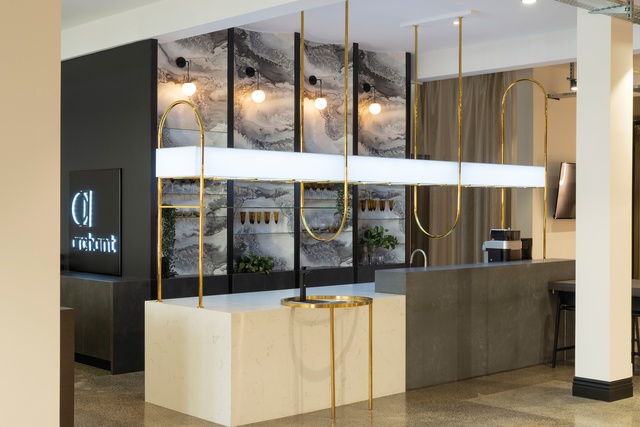
Interior: What was it like pursuing this alone and what, or who, helped you?
KB: It’s very daunting to enter the world of the unknown but my husband – who’s an entrepreneur with multiple businesses of his own – has been the one to push me out of my comfort zone and urge me to start my own practice. He said that it doesn’t matter when you start; it will always be hard at first but you will naturally grow to what you seek to be.
Interior: How do you foresee your studio changing over time?
KB: The quality of our design through to completion matters the most to me. Growth isn’t the driver of my business. I have a wonderful team at various stages in their careers. I believe in investing in a team and allowing them to grow and show you where they aim to be. I haven’t needed to advertise so I’m seeing where my business leads.
Interior: What kinds of problems and design solutions do you think will arise and/or recur in the near feature of your profession?
KB: We are slowly recognising our environment and evolving ways to create more sustainable living. I’m already noticing that clients are asking environmentally conscious questions about interior installations: e.g., about which glues and silicones are used, about which chemicals are being used to treat carpets, about paint fumes, etc. As spatial designers, we should be aware of what we are specifying. Any way we can contribute to sustaining our environment should be taken more seriously.
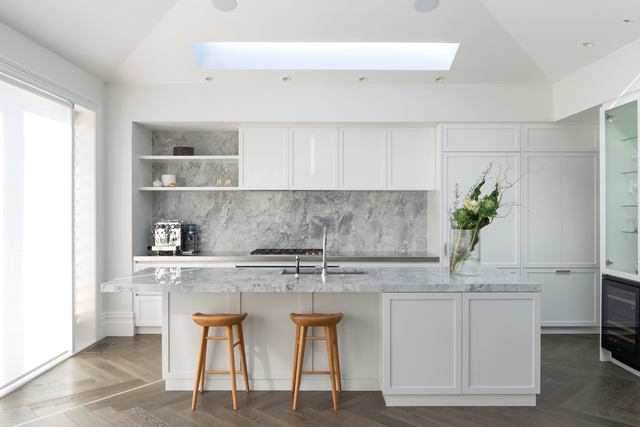
Interior: During your Interior Awards presentation, you mentioned that you enjoy “putting things together”. What is it about this that interests you?
KB: It’s a natural process for me, no matter what the ‘thing’ may be – starting with concept development, working design plans to final drawings, then installing the interior and driving the project to completion. The best feeling is doing the finishing touches. During that process, you think about the user and the product – how you want this to be used and perceived.
Interior: What did it mean to you to win the Emerging Design Professional category at this year’s Interior Awards? What has happened since?
KB: I was completely honoured and overwhelmed, to say the least; it felt so surreal. It’s humbling to be recognised professionally in something you are so connected to. Since the Awards, I’ve had numerous suppliers get in contact me and my team. Some clients have been proud to say they are working with an Emerging Designer and they found me in the early days of my career. It’s nice to feel more comfortable about my young age, too; age doesn’t necessarily matter.
Interior: The judges of this year’s Awards commended you for your tenacity and sustained momentum. What fuels you?
KB: My late mother has always been my inspiration (she passed away from cancer when I was 16). She taught my two sisters and me to work hard, be honest and be organised. In anything I do, I want it to be of quality and to meet high standards. My father, a farm-owner, works seven days a week. He has to get out of bed each morning, rain or shine. His commitment to work is second to none. Now that I’m a mum too, I want to be that role model for my own child. But, ultimately, my passion in spatial design is what makes me get out of bed each day – it’s what I love to do!

Interior: How would you describe your personal style? What has the process been like finding and developing it?
KB: My personal style is contemporary with a touch of mid-century design. It is layers of texture, sculptural elements and clean, lineal lines.
At first, it was hard to put a finger on anything I fully loved. There are so many things I love individually but which may not go well together. At the moment, I have my attention drawn to mid-century design and architecture, minimalism and classical details. I balance these eras together along with clients’ professional and personal identities.
Interior: In your opinion, which material is the most underappreciated?
KB: Steel – it’s an important substrate for many of the beautiful materials you see, like marble benches, which sometimes require steel frame supports hidden beneath their surfaces. It’s very versatile and can be oiled, powder coated or left raw. It can transform a space in many ways because of its flexibility of form, its properties and its colour.
This article first appeared in Interior magazine.


